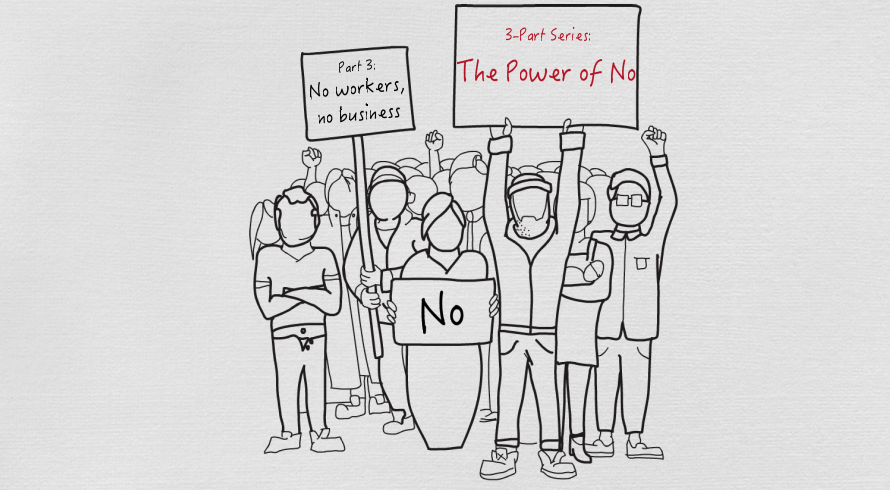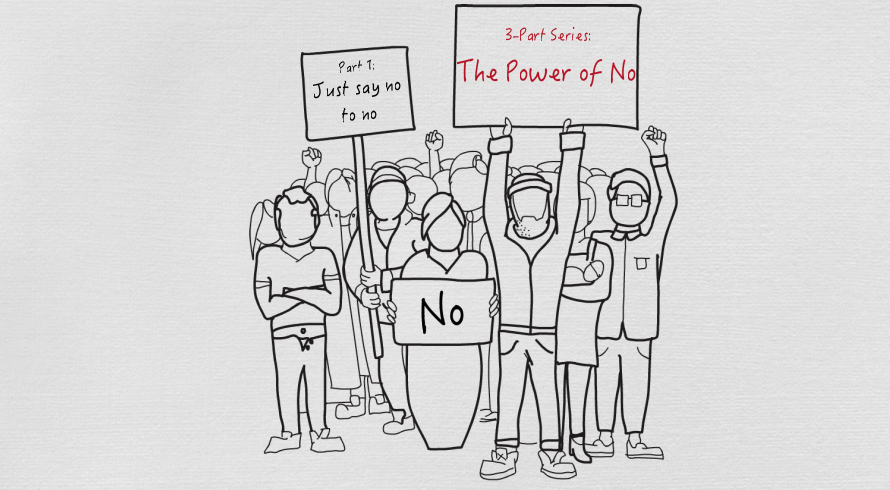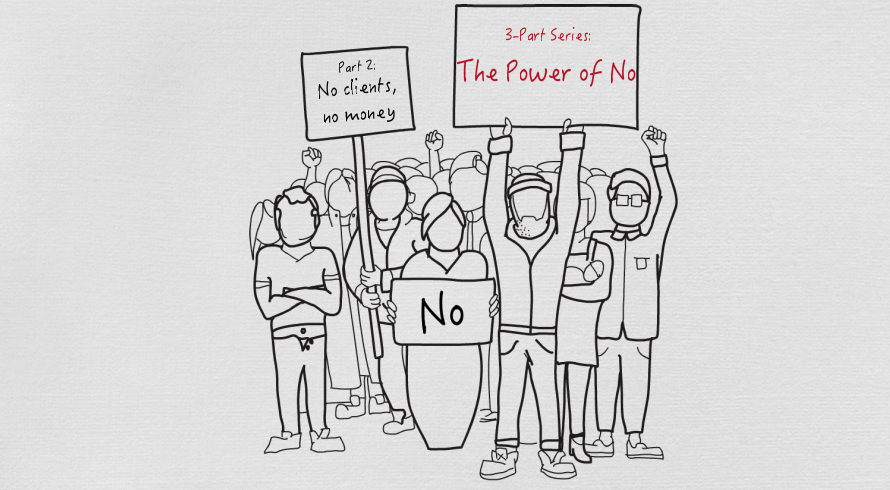
Let’s recap. In Part 1: Just Say No to No, we discussed how words can be used to build bridges instead of walls. In Part 2: No Clients, No Money, we discussed how certain words can strengthen your customer relationships. Now that you’ve considered the “Power of No,” in Part 3, we are concluding this series by exploring ways to improve business communications with your workers.
First, ask yourself “how can this work for me?”
As I’ve said before, there are undoubtedly times when the word “no” has an appropriate place in a conversation. However, the overuse and misuse of the word “no” has unintended consequences. There’s good news, though: there are alternatives to the word “no”. And we believe that the value of building and maintaining a relationship with your workers is worth a few extra words in your vocabulary!
How does this resonate with you?
I’m great, you’re not. Wow. It’s a powerful statement, isn’t it? Imagine how an employee feels when communications are worded in this way. The word “no” in employee management can be alienating and when used in this way, have a negative affect on teamwork, loyalty, one’s ability to focus, and process management. Here are some examples of how it is translated by an employee’s ears:
- “Just do as I say, not as I do.”
- “You don’t enough experience to ask questions.”
- “You must be trying to do my job.”
- “We don’t value leaders; we want followers.”
Then, consider setting a precedent for change.
Setting a precedent for change in employee communications starts with the simple exercise of listening. For example, what if an employee has a suggestion for a new way of working? You already have a process and understand why it would need to change. It’s ok to be honest with your employee, and tell him or her that the way of working is not going to change at this time. However, you can still find a way to give the worker a voice and be considerate.
Using the example of receiving employee feedback, are some ideas to receive and respond to workers, without using the word “no”:
- Option 1. “Let’s discuss your experiences and what prompted the request for change.”
This is a solution-oriented way of letting the employee know that you want to understand their needs in order to best help them. When you understand their plight, you can show genuine appreciation for the employee taking the time to consider improving their place of business. In return, they will be more open to sharing feedback directly with you. - Option 2. “Let’s find a way to get you more involved in process implementation”
This is a solution-oriented way of letting the employee know that they could play a role in being an internal champion for change. In my observations, leadership most often confuses communications with defending their leadership decisions. Try something different and make your contributors feel valued and ask for more feedback instead of less. Training your workers to be solution-oriented in their thinking, as opposed to complainers, will pay off in dividends.
What’s next?
Thank you for taking the time to explore the Power of No in this 3-part series. I look forward to hearing your stories about your own efforts to change the way you communicate in the workplace.





